Diamond Stealth 32
The Stealth 32 arrived in 1994 and was based on the Tseng Labs ET4000/W32p chipset, which ran on both the PCI and VESA Local Bus.
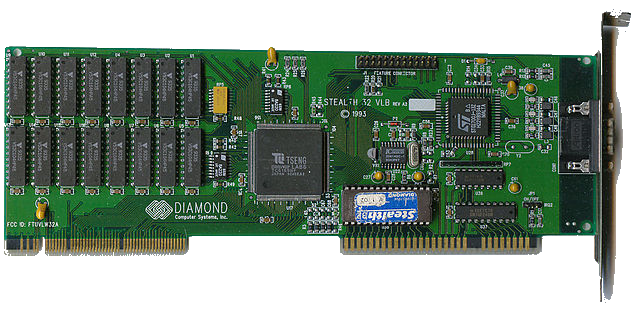 |
Released | 1994 |
| Bus | VESA Local Bus or PCI | |
| Chipset | Tseng Labs ET4000/W32p | |
| Standards | Hercules, CGA, EGA, VGA | |
| Memory | 1 MB or 2 MB | |
| Ports | 15-pin DSUB (video out) 26-pin VGA Feature connector |
|
| RAMDAC | ST Microelectronics STG1702J | |
| Part # | (Unknown) | |
| FCC ID | FTUVLW32A (VLB), FTUPCIW32A (PCI) | |
| Price | At launch: $249 (both VLB and PCI versions) | |
| See Also | Diamond Stealth 24, Diamond Stealth Pro, Diamond Stealth 64 |
The Diamond Stealth 32 sat in their mid-range tier, with SpeedStar 64 and SpeedStar Pro SE in the lower tier, and Stealth 64 and Viper SE in their premium range.
The Stealth32 would have typically been used on the fast clock-doubled or newly-introduced clock-tripled 486 in VESA Local Bus form, or in what would in 1994 have been a brand new Pentium-based system in PCI form.
The W32p graphics accelerator could support RAMDACs up to TrueColor (16.7 million colours), but many cards came with HiColor or even standard VGA RAMDACs. For the Diamond Stealth 32, maximum resolution was achieved at 1280 x 1024 in 256 colours, and 16.7 million colours was available at 1024 x 768 - both at an 80 Hz refresh rate. As far as I can tell all these cards used the ST Microelectronics STG1702J RAMDAC, which provides an enhanced TrueColor palette with a 16-bit wide pixel port.
The original W32p chip provided a 32-bit path between the graphics controller and its memory. The W32i and W32p used memory interleaving to effectively double the path to 64-bits, with only a minimum incremental cost to deliver the enhanced performance (note: I believe memory interleaving only helps in Windows where you run at high colour depths, though when you do it can be a significant gain). In addition, the W32i and W32p could process 64-bits of graphic data in the same time that the original W32 could process 32-bits of graphic data.
Given the VLB slot length and high levels of integration into the accelerator chip itself, these VESA Local Bus cards do appear somewhat sparse. The PCI version of the Stealth32, running on a 66 MHz bus performs better than the VLB version that is limited to its 50 MHz bus.
Board Revisions
Four VLB board revisions are known: A2, A3, B1, and B4. Revision A cards continued to use the older DIP ICs for memory, (8 ICs per 1 MB bank) while revision B cards used the newer SOJ memory packages.
One PCI board revision is known: B6. Like the rev.B VLB cards, this uses SOJ memory packages (2 ICs soldered in for 1 MB + 2 slots for expansion to 2 MB total).
Competition
The same year Tseng Labs launched the W32p, ATI introduced Mach64, S3 had Vision864 and Vision964, and Number Nine introduced Imagine 128, the world's first 128-bit graphics processor.
All were moving to the PCI architecture. Tseng Labs' ET4000/W32P was considered the fastest for DOS performance, with S3's Vision964 and ATI's Mach64 running a close 2nd. There was still a good market for VESA Local Bus cards in 1994, as nearly everyone still had a 486. As such, it was common for graphics card manufacturers to release graphics accelerators in both VLB and PCI variants like this.
In the Media
Diamond supplies the same InControl utility software and identical drivers with all of the Stealth32 and Stealth64 cards.
The Diamond Stealth 32 VLB also costs $199, and its hardware and software feature set is virtually identical to that of its PCI sibling. In benchmark testing, the Stealth32 VLB nosed out the other ET4000/W32p-based boards for top DOS honors and scored in the middle on Windows tests.
On the 800-by-600, 8-bit color WinBench (Graphics WinMark) tests, the middle performers were a mix of 32-bit and 64-bit processors. ATI's 64-bit Graphics Xpression 2MB PCI performed only slightly better than the 32-bit Diamond Stealth 32 PCI and Cardex Challenger Pro PCI (which is based on the W32p).
Two Diamond products took the lead on the Graphics WinMark tests at 1,024-by-768 with 16-bit color. The W32p-based Diamond Stealth 32 PCI's excellent performance can, in part, be attributed to Diamond enabling the 16-bit color port on the chip and using linear-memory addressing as opposed to memory-bank addressing at the driver level. Other boards based on the W32p had scores 30 percent lower on the same test.
On our PC Bench tests, which examines DOS text and graphics performance, the results showed that Tseng Labs maintains dominance in overall DOS video performance with its ET4000/W32p chip. Out of the five top-performing graphics boards in this area, four incorporated this Tseng chip. "
PC Magazine, Dec 1994
Setting it Up
The Diamond Stealth 32 is fully PnP-compatible. No hardware configuration is required, though jumper JP1 can be used to enable or disable the card's use of IRQ2/9 for tracking when the vertical retrace is happening.
Downloads
Operation Manual Get in touch if you can provide this missing item! |
Original Utility Disk Comprises DOS utilities, CAD drivers, and NT 3.1 driver. |
VGA BIOS ROM Get in touch if you can provide this missing item! |
VGA BIOS ROM Get in touch if you can provide this missing item! |
VGA BIOS ROM Get in touch if you can provide this missing item! |
VGA BIOS ROM Get in touch if you can provide this missing item! |
Windows 3.1 Drivers Diamond Stealth 32 Windows 3.1 driver. |
Windows 3.1 Drivers Diamond Stealth 32 Windows 3.1 driver. |
Windows 95 Drivers Diamond Stealth 32 Windows 95 driver. |
OS/2 2.1x Drivers Diamond Stealth 32 OS/2 2.1x driver. |
More Pictures
.jpg)
A Diamond Stealth 32 Rev.A2, courtesy of Jonas Jannson
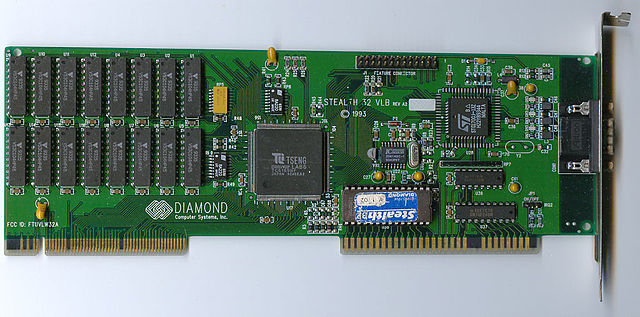
A Diamond Stealth 32 Rev.A3
.jpg)
.jpg)
.jpg)
.jpg)
.jpg)
.jpg)
A Rev.B1 VLB card with its SOJ memory
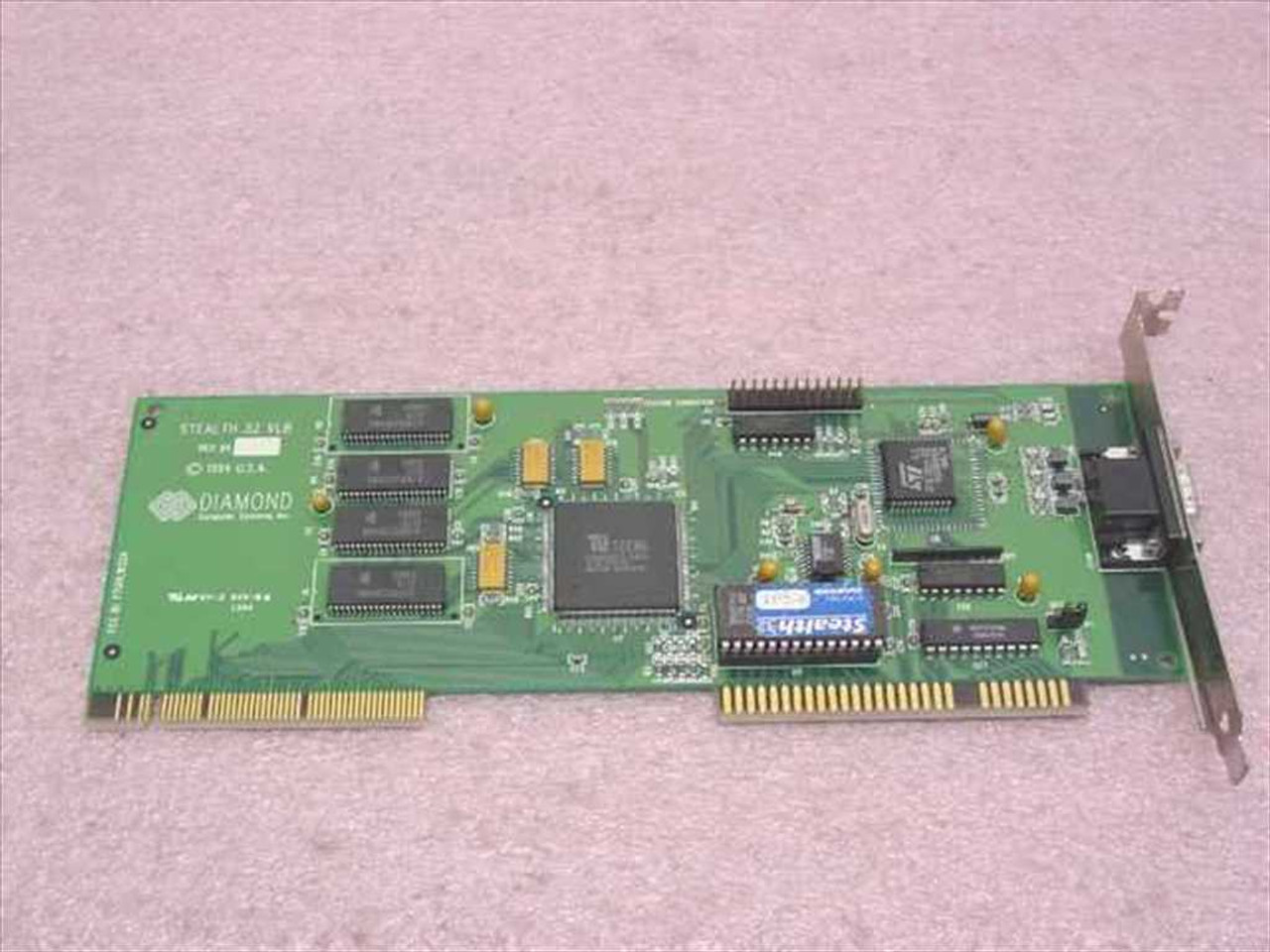
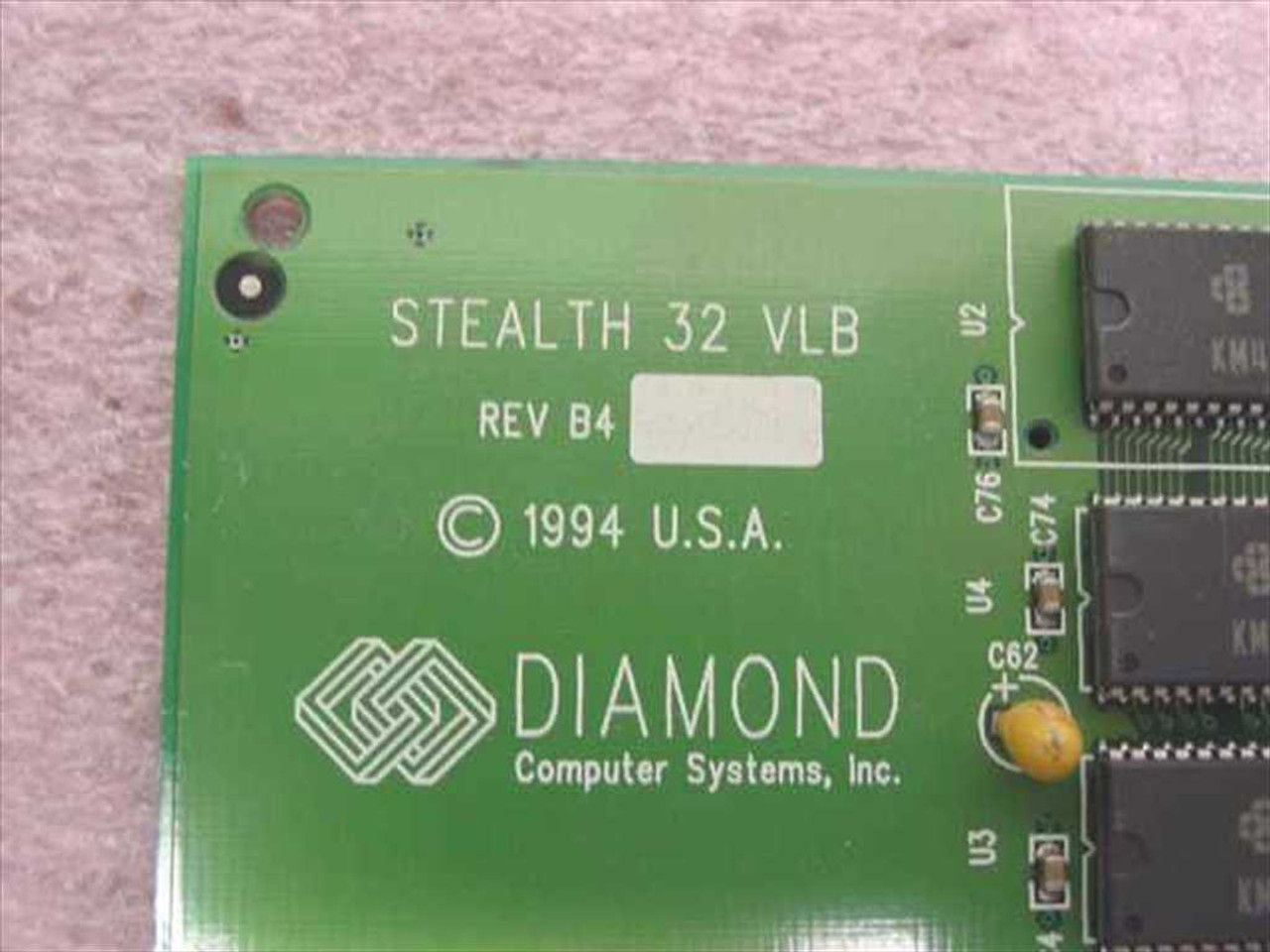
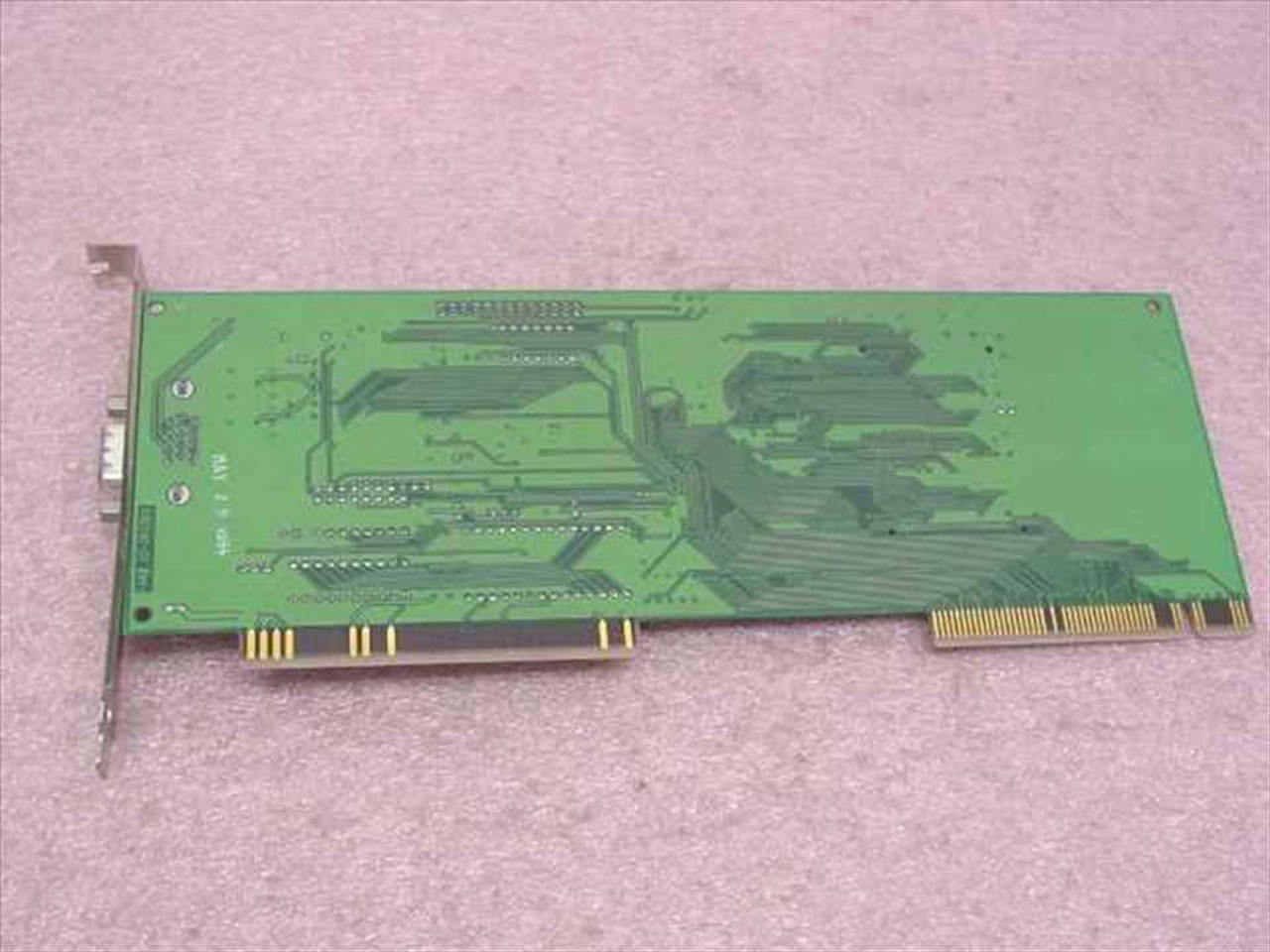
A Rev.B4 VLB card with
its SOJ memory